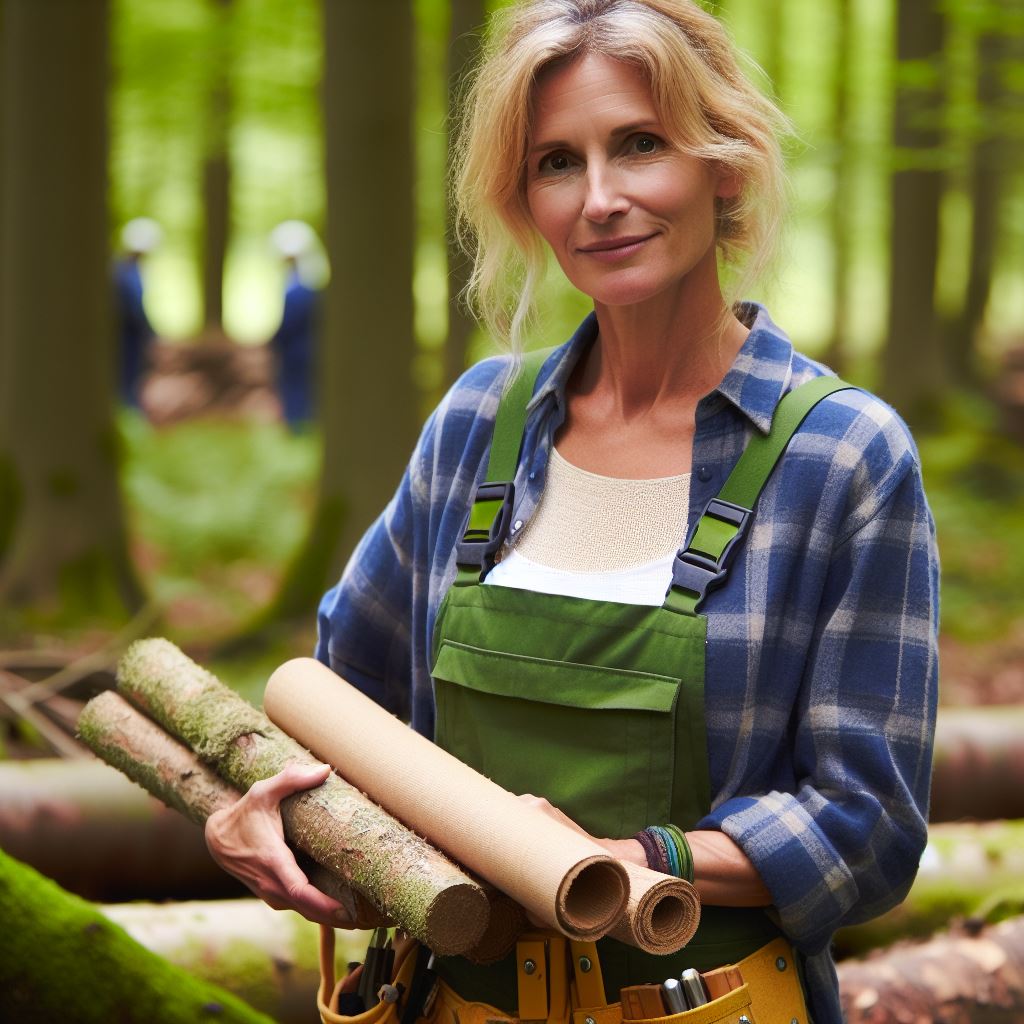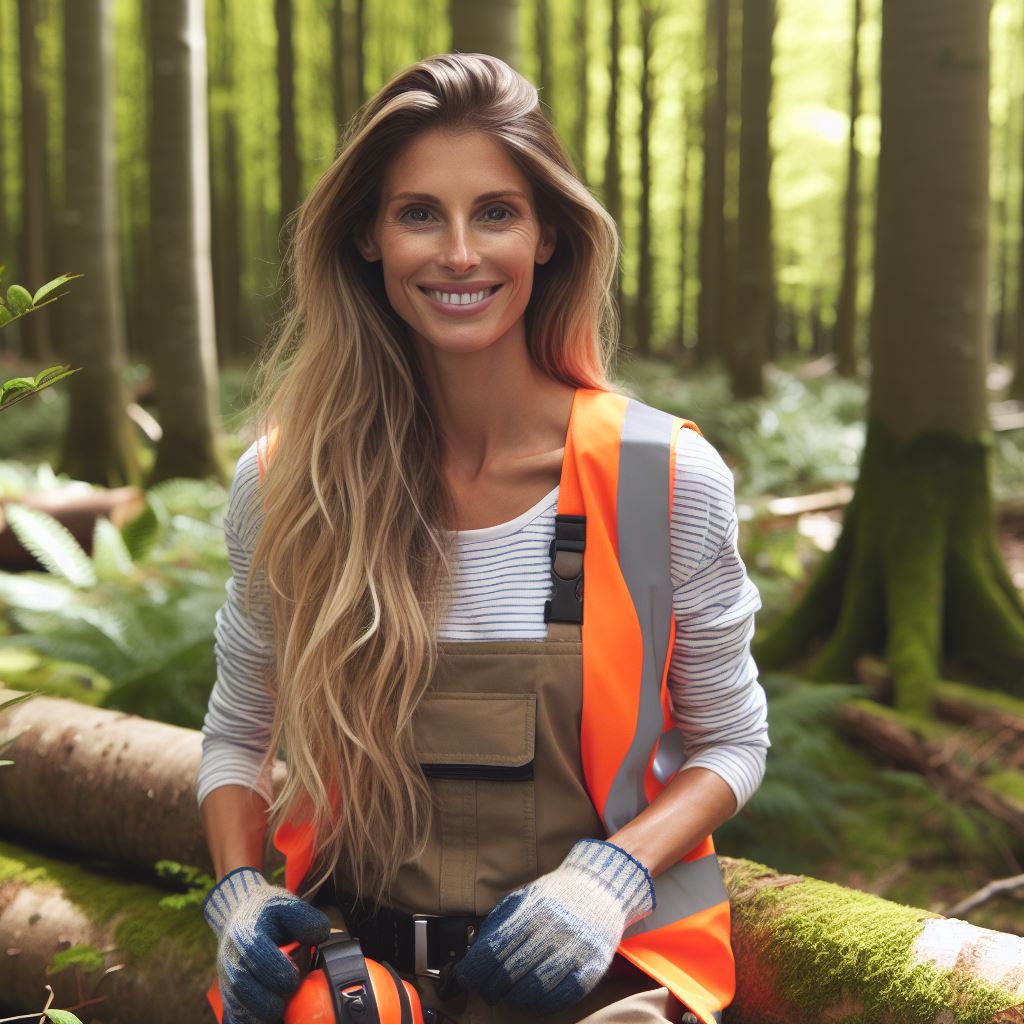Introduction
Arboriculture laws in the UK play a pivotal role in regulating tree management practices, significantly impacting individuals involved in arboriculture.
Understanding these laws is not just a legal obligation but a fundamental necessity for practitioners in the field.
This section aims to shed light on the essential aspects of arboriculture laws in the UK.
Offering comprehensive insights that will enable those in the arboriculture industry to navigate and comply with the legal framework effectively.
Importance of Understanding Arboriculture Laws
Comprehending arboriculture laws is indispensable for professionals as it ensures adherence to legal standards, safeguarding both the environment and practitioners.
Violations can result in severe consequences, making legal knowledge a cornerstone for sustainable and responsible arboriculture practices.
Thesis Statement
This blog post will delve into the intricacies of arboriculture laws in the UK, providing a comprehensive understanding of key aspects that practitioners must navigate.
From tree preservation orders to responsibilities during tree work, we’ll explore the legal landscape to empower arborists and tree enthusiasts alike.
Definition of Arboriculture
Arboriculture and its significance in the UK
Arboriculture, in simple terms, refers to the study and cultivation of trees, shrubs, and other woody plants. It plays a crucial role in the United Kingdom, where tree preservation is highly valued.
The significance of arboriculture in the UK cannot be understated, as it contributes to the overall well-being of the environment and the aesthetics of urban areas.
The various activities involved in arboriculture, such as tree planting, maintenance, and removal
Arboriculture encompasses a wide range of activities, all of which are aimed at maintaining the health, safety, and integrity of trees.
Tree planting is one of the primary activities within arboriculture, serving to replenish and enhance the tree population in various regions of the UK.
It helps combat urban heat island effects, improve air quality, and provide habitat for wildlife.
Another vital aspect of arboriculture is tree maintenance. This involves regular inspections and interventions to ensure the optimal growth and development of trees.
Pruning, for instance, helps promote healthy branch growth, enables access to sunlight, and prevents potential hazards such as falling limbs.
Tree maintenance also includes the diagnosis and treatment of diseases and pests that can negatively impact tree health.
Personalized UK Career Consulting
Receive tailored career guidance designed just for you. Get actionable steps and expert support to boost your career in 1-3 days. Take control of your career now.
Get StartedHowever, arboriculture also encompasses tree removal, which is necessary when a tree is deemed unsafe, diseased beyond recovery, or obstructive to construction projects.
The potential risks and liabilities associated with these activities
While tree removal may seem straightforward, it involves potential risks and liabilities that need to be carefully managed.
Risks associated with tree planting, maintenance, and removal arise from various factors. Firstly, the physical nature of the work poses risks of injury to arborists themselves.
Working at heights, handling sharp tools, and operating heavy machinery increase the chances of accidents and should be approached with caution.
Furthermore, there are potential liabilities involved in arboriculture. In urban areas, trees can pose risks to adjacent properties if they are not properly maintained or monitored.
Falling branches or tree failures due to diseases or structural issues can cause property damage or, in worst cases, harm people.
This is why arborists must adhere to arboriculture laws and regulations to minimize risks.
Arboriculture laws in the UK aim to ensure the responsible cultivation, management, and removal of trees. These laws outline the necessary permits, permissions, and guidelines for tree-related activities.
For instance, certain trees may be protected by preservation orders, making it illegal to carry out any work on them without proper authorization.
Local councils are responsible for enforcing arboriculture laws and regulations, and they have the power to issue fines or take legal action against those who fail to comply.
Arborists and individuals involved in tree-related activities must be aware of these laws to avoid unnecessary penalties and to promote the sustainable and safe management of trees.
To sum up, arboriculture plays a vital role in the UK, encompassing activities such as tree planting, maintenance, and removal.
However, it is crucial to manage the potential risks and liabilities associated with these activities.
By adhering to arboriculture laws, individuals can ensure the preservation and proper management of trees in the UK.
Your Dream Job Starts with a Perfect CV
Get a tailored CV and cover letter that captures your unique strengths and stands out in your industry. Let us help you make an unforgettable first impression.
Get StartedOverview of Arboriculture Laws in the UK
Arboriculture, the cultivation and management of trees, is governed by a legal framework in the UK.
This framework includes a range of primary legislation aimed at protecting trees, promoting conservation, and ensuring responsible management of tree resources.
Two key laws that address arboriculture are the Wildlife and Countryside Act 1981 and the Town and Country Planning Act 1990.
Wildlife and Countryside Act 1981
The Wildlife and Countryside Act 1981 is an important piece of legislation that safeguards the UK’s natural environment, including trees.
It provides protection for certain species of trees, making it an offence to intentionally take, uproot, or destroy them without valid permission.
The act also prohibits the sale and possession of certain species of protected trees and plants.
The aim of this law is to conserve and protect native trees, ensuring their survival for future generations.
It recognizes the ecological importance of trees and the role they play in supporting biodiversity.
By safeguarding specific tree species, the act helps maintain a healthy and diverse natural environment.
Town and Country Planning Act 1990
The Town and Country Planning Act 1990 is another crucial legislation that addresses arboriculture in the UK.
This act grants local planning authorities the power to protect trees through the implementation of Tree Preservation Orders (TPOs).
TPOs are legal measures intended to safeguard trees that have significant amenity value.
Under this act, local authorities can designate specific trees or woodlands as protected, preventing their removal, destruction, or pruning without authorization.
TPOs ensure that the importance of trees in enhancing local landscapes is considered during the planning and development process.
Optimize Your LinkedIn for Success
Boost your LinkedIn profile with a professional bio, keyword-rich headline, and strategic recommendations that attract recruiters. Stand out from the crowd and get noticed.
Optimize NowThey encourage responsible management of tree resources and contribute to the preservation of the country’s treasured green spaces.
Protecting Trees and Promoting Conservation
The arboriculture laws in the UK aim to protect trees and promote conservation through various means.
By requiring permission for removal or destruction, they discourage indiscriminate tree felling and discourage practices that can harm the environment.
The legislation ensures that decisions regarding trees take into account their environmental significance and societal value.
The Wildlife and Countryside Act and the Town and Country Planning Act also contribute to public awareness and education about the importance of trees.
They emphasize the need for responsible management of tree resources, encouraging individuals, businesses, and organizations to consider the impact of their actions on the environment.
In addition to protecting individual trees, these laws also recognize the importance of woodland conservation.
They provide measures to safeguard woodlands, recognizing their contribution to biodiversity, climate regulation, and recreational value.
The legal framework governing arboriculture in the UK plays a crucial role in protecting trees, promoting conservation, and ensuring responsible management of tree resources.
Through legislation such as the Wildlife and Countryside Act 1981 and the Town and Country Planning Act 1990, the UK aims to preserve its natural environment.
Safeguard native trees, and encourage sustainable practices in the cultivation and management of trees.
These laws foster a culture of environmental responsibility, ensuring that the benefits of trees are enjoyed by present and future generations.
Tree Preservation Orders (TPOs)
What are TPOs and their Significance in Tree Conservation
- TPOs are legal orders issued by local authorities to protect trees of significant value or importance.
- They aim to preserve trees that contribute to the local environment, visual amenity, or historical significance.
- TPOs help maintain the natural beauty, biodiversity, and ecological balance of urban and rural areas.
- These orders play a crucial role in safeguarding trees from unnecessary removal or damage.
- They ensure that future generations can enjoy the benefits provided by trees in their neighborhoods.
The Process of Applying for or Challenging a TPO
- If someone believes a tree should have a TPO, they can request their local authority to consider it.
- The local authority will evaluate the tree’s value using criteria like its age, species, and contribution to the area.
- If the authority agrees, they will impose the TPO, making it an offense to carry out restricted activities without permission.
- Individuals or organizations challenging a TPO should present evidence supporting their case to the local authority.
- Challenges can include proving the tree’s poor health, danger it poses, or conflicts with development plans.
- Challenging a TPO requires a strong case, as the local authority carefully assesses the situation before making a decision.
Legal Implications and Potential Consequences of Violating a TPO
- Violating a TPO is a criminal offense, punishable by an unlimited fine.
- Removing, lopping, or uprooting a protected tree without consent can lead to prosecution.
- Individuals or organizations responsible for the offense may be required to restore the tree’s condition or replace it.
- A breach of a TPO can severely damage a person’s reputation and result in financial and legal consequences.
- Local authorities have the power to stop prohibited works, replant trees, and reclaim costs for enforcement actions.
- It is essential to consult with local authorities before undertaking any work or seek professional advice.
- Awareness of TPOs and compliance with their regulations can prevent legal issues and protect valuable trees.
In summary, Tree Preservation Orders (TPOs) are significant legal measures implemented in the UK to protect and conserve valuable trees.
They ensure the preservation of trees that contribute to the local environment’s beauty, biodiversity, and historical significance.
The process of applying for or challenging a TPO requires evidence-based arguments, and local authorities evaluate each case carefully.
Violating a TPO can result in criminal charges, unlimited fines, restoration requirements, and reputational damage.
By respecting TPOs and seeking professional advice, individuals and organizations can contribute to tree conservation and avoid legal complications.
Read: Aquaculture in the UK: Education Pathways

Protected Trees and Species
In the UK, there are different categories of protected trees and species that are subject to specific laws and regulations.
Understanding these categories and the associated legal restrictions and obligations is essential for anyone working with trees and species.
Here, we will explore the various protections in place and provide examples of commonly protected trees and species.
Categories of Protected Trees and Species
- Trees in conservation areas: Trees within conservation areas hold automatic protection, requiring permission before any work can be carried out, including pruning or felling.
- Trees with Tree Preservation Orders (TPOs): Local authorities can designate specific trees with TPOs, making it an offense to cut, damage, or destroy them without consent.
- Priority habitats and species: Habitats and species deemed to be of high conservation value, including certain bird species and rare plants, receive special protection under UK law.
Legal Restrictions and Obligations
Working with protected trees and species comes with legal restrictions and obligations that must be adhered to:
- Permission must be obtained from the local planning authority before carrying out any work on trees in conservation areas or those protected by TPOs.
- When applying for consent, it is vital to provide detailed information about the proposed work, including the reasons for it.
- If consent is granted, it might come with conditions regarding the timing, methods, and replacement of any trees affected.
- Failing to comply with the legal requirements can result in criminal prosecution, hefty fines, and orders to replace or restore trees.
Examples of Commonly Protected Trees and Species
The UK is home to various trees and species that benefit from legal protection. Some of the commonly protected ones include:
- Oak trees: These majestic trees are cherished for their ecological and cultural importance and often protected.
- European Protected Species: Certain bird species, such as the golden eagle and the red kite, receive protection under UK law.
- Great Crested Newts: These amphibians are strictly protected due to their declining population and vulnerability.
- Badgers: As a protected species, badgers are safeguarded by law to maintain their habitats and prevent disturbance.
When working with trees and species in the UK, understanding the laws surrounding protected trees and species is crucial.
Knowing the categories of protection, the legal restrictions, and obligations allows individuals to comply with the legislation and protect the environment.
By preserving these natural treasures, we contribute to the conservation efforts and safeguard the biodiversity that makes the UK a remarkable place.
Read: Sustainable Practices in UK Aquaculture Tech
Planning Permissions and Tree Works Applications
Role of Planning Permissions in Arboriculture Activities
Planning permissions play a crucial role in ensuring that arboriculture activities are carried out legally and in line with local regulations.
These permissions are necessary to maintain the balance between development and the protection of trees and green spaces.
Process of Obtaining Planning Permissions for Tree Works
To obtain planning permissions for tree works, individuals or organizations must follow a specified process.
This typically involves submitting tree works applications to the relevant local planning authority.
Applicants will likely need to provide detailed information regarding the nature of the proposed works, including the species, size, and condition of trees involved.
Additionally, they may need to submit sketches or drawings illustrating the intended works.
Submission of Tree Works Applications
When submitting a tree works application, it is vital to ensure that all required documentation is complete and accurate.
Failure to provide complete information can result in delays or even rejection of the application.
It is advisable to consult with a professional arborist or tree expert when preparing the application to ensure its accuracy and compliance with local regulations.
This can significantly increase the likelihood of a successful outcome.
Considerations and Criteria Used by Local Planning Authorities
Local planning authorities evaluate tree works applications based on various considerations and criteria.
These factors help them determine the potential impact that the proposed works may have on the environment and the local community.
Some common considerations include the health, structural integrity, and amenity value of the trees involved. Authorities also assess the potential impact on wildlife habitats and the landscape.
Additionally, they consider the tree’s historical or cultural significance.
When evaluating tree works applications, planning authorities also take into account the overall landscaping plan of the area, ensuring that the proposed works align with any existing conservation or preservation initiatives.
Obtaining planning permissions for tree works is a vital step in the field of arboriculture. It ensures that tree-related activities are carried out responsibly and in adherence to local regulations.
Understanding the process and requirements for obtaining these permissions greatly contributes to the successful completion of tree works projects while maintaining environmental balance and community well-being.
Read: UK Aquaculture Technician: Career FAQs
Delve into the Subject: The Role of Foresters in UK Woodlands
Health and Safety Regulations
Arboriculture plays a vital role in maintaining the health and preservation of trees, as well as managing their aesthetics and safety.
However, working as an arboricultural professional comes with its own set of risks and hazards.
In the UK, strict health and safety regulations are in place to ensure the well-being of both workers and the public.
The health and safety regulations that arboricultural professionals must comply with in the UK
Compliance with these regulations is crucial to prevent accidents and maintain a safe working environment.
One of the key health and safety regulations that arboricultural professionals must comply with in the UK is the Health and Safety at Work Act 1974.
This legislation requires employers to ensure the health, safety, and welfare of their employees and anyone else who may be affected by their work activities.
Arboricultural companies must, therefore, take appropriate measures to reduce the risks associated with tree care and maintenance.
The potential risks and hazards associated with arboriculture activities
Arboriculture activities involve various potential risks and hazards that can lead to accidents and injuries. One of the most significant hazards is working at height.
Climbing trees, using ladders, or operating aerial platforms pose a high risk of falls, which can result in severe injuries or even fatalities.
It is crucial for arborists to use proper height safety equipment, such as harnesses and helmets, to minimize the likelihood of accidents.
Additionally, handling tools and equipment such as chainsaws and wood chippers can also pose a significant risk.
Poorly maintained or incorrectly used machinery can cause severe injuries, including cuts, amputations, and even fatalities.
Arboricultural professionals must receive appropriate training on equipment usage, maintenance, and safety protocols to minimize these risks.
The importance of risk assessments, proper training, and the use of personal protective equipment
Furthermore, arborists are often exposed to natural hazards such as falling branches or unstable trees.
It is essential to conduct thorough risk assessments before undertaking any tree work to identify potential dangers and develop appropriate control measures.
Regular inspections of trees and understanding their physiological conditions are also crucial to maintain a safe working environment.
Personal protective equipment (PPE) plays a vital role in ensuring the safety of arboricultural professionals. PPE includes items such as helmets, gloves, eye and ear protection, and protective clothing.
Wearing the correct PPE can significantly reduce the risk of serious injuries and protect against common hazards in arboriculture, such as falling debris and impact injuries.
Moreover, training and competency are essential in ensuring the safe and efficient execution of arboricultural activities.
Arboricultural professionals should receive adequate training on tree climbing techniques, aerial rescue procedures, chainsaw usage, and other relevant skills.
Continuous professional development programs can help keep arborists up to date with the latest safety practices and techniques.
In summary, complying with health and safety regulations is of paramount importance for arboricultural professionals in the UK.
Risk assessments, proper training, and the correct use of personal protective equipment are crucial to mitigating the potential hazards associated with arboriculture activities.
By following these regulations, arborists can carry out their work safely while ensuring the well-being of both themselves and the public.
Read: Aquatic Health Management by UK Experts
Discover More: UK Fishing Ports: The Heart of Fishermen’s Lives
Find Out More: UK Agri-Management: Education & Career Path
Conclusion
In this blog post, we have discussed the important aspects of arboriculture laws in the UK.
We have learned that these laws play a crucial role in regulating the management and protection of trees.
Understanding arboriculture laws is vital for professionals in the field as they need to ensure compliance with regulations to avoid legal consequences and contribute to environmental preservation.
We have highlighted the key points, including the need for proper permissions before carrying out tree works.
The role of Tree Preservation Orders (TPOs), and the significance of protected trees.
It is important for all professionals in the field of arboriculture to familiarize themselves with the specific regulations in their respective areas.
They should also seek professional guidance whenever necessary to ensure compliance with the law.
By complying with arboriculture laws, professionals can contribute to the preservation of trees, protection of wildlife, and the overall improvement of the environment.
So, let’s keep ourselves informed, stay compliant, and work towards a greener future!




